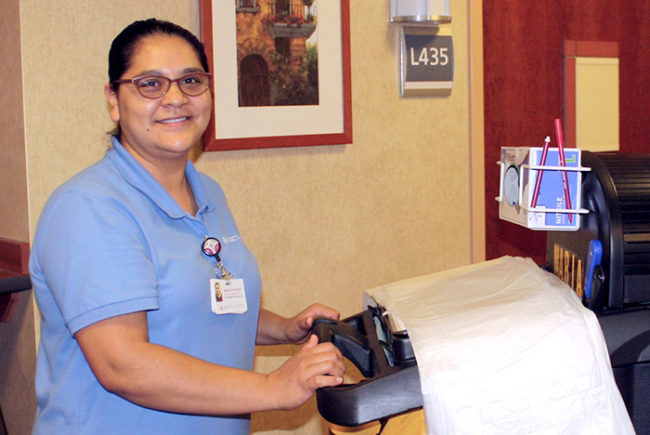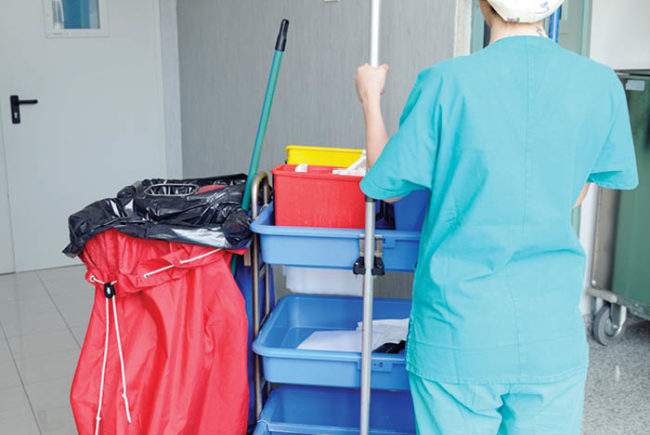It goes without saying that clean health care facilities are vital in reducing health care-associated infections, as well as in achieving higher HCAHPS scores.
That is why providing a thoroughly healthful patient care environment is critical for today’s health care facilities. Environmental services programs are the stewards of providing a clean and safe facility, which builds confidence in a hospital’s services and translates into improved patient satisfaction.
However, maintaining ultraclean facilities requires the use of strong solutions for killing bacteria. The unintended side effect of using these types of cleaning solutions is chemical-smelling odors, which can often frustrate environmental services professionals. Residual odors from bleach, hydrogen peroxide and other chemicals can otherwise compromise a clean and healthful environment.
In addition, many modern facilities often undergo continual floor care, as well as painting and other renovations, which can allow chemical odors to permeate throughout the facility.
These odors also can have a negative business impact. For example, cleaning and maintenance product odors can significantly delay the transition of a hospital room from one patient to the next. This delay can extend from 24 to 48 hours, thus resulting in lost revenue.
Fortunately, there are government-related standards that provide recommendations for cleaning and odor abatement. The Occupational Safety and Health Administration/Joint Commission Resource Alliance created a standard (EC.02.06.01) that recommends hospitals establish and maintain a safe, functional environment. The standard also calls for patient areas to be clean and free of offensive odors.
Environmental services managers now have the opportunity to consider the use of safe, effective and eco-friendly odor abatement solutions. These solutions are ideal for use simultaneously or immediately following the application of cleaning, disinfecting and maintenance chemical products.
Managers should consider using commercial odor-mitigation products that don’t use fragrances to mask odors. In addition, the most ideal solutions can address a broad spectrum of odors through a variety of different delivery methods. They also should ask for and carefully research odor-elimination claims.
An effective odor-control program, will create a cleaner, more healthful environment that positively impacts HCAHPS scores, while also achieving a positive business return on investment.
Laura Haupert, Ph.D., is the director of research and development for OMI Industries Inc., Fresh Wave IAQ and Fresh Wave Natural Odor Eliminating Products.
Practice guidance available
Practice Guidance for Healthcare Environmental Cleaning, second edition, helps to define and advance the professionals responsible for care of the health care environment to ensure high-quality outcomes and healthy communities.
This manual provides evidence-based research, guidance and recommended practices that should be considered for inclusion in health care environmental services departments. Because each facility has its own needs, this resource has been designed to enhance an existing program.
For more information, visit www.ahe.org/ahe/learn/tools_and_resources/publications.shtml.
Certified Healthcare Environmental Services Technician Certificate
This certification focuses on critical areas of competency for front-line technicians, including infection prevention, quality of care, patient outcomes and experience.
For more information, visit www.ahe.org/ahe/lead/CHEST/chest_home.shtml.
Environmental Sustainability Certificate Program
AHE has launched a certification to acknowledge the environmental and ecological sustainability efforts of environmental services departments.
For more information, go to www.ahe.org/ahe/lead/environmental_sustainability_certificate_program.shtml.





